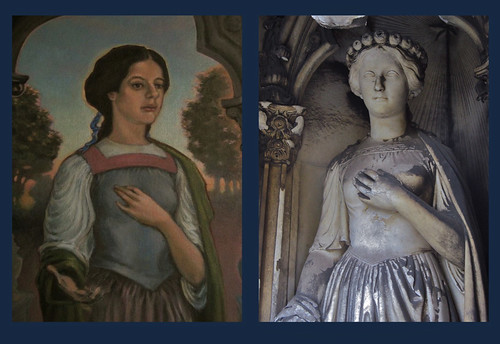She was swept inside from out of the gloom and crowned with 17 roses. It would be, despite the weather, her happiest birthday ever, or so her friends had thought. Singing and dancing ensued, while a great storm, like an ogre, shook the panes and doors with the devil’s own passion. Each colossal display of its might caused the celebrants to thrill and delight ever louder in singing their songs.
She was born on Feb. 3, 1828 in New York, and thereafter forsaken until her adoption by Charles and Adele Canda, notables of the local French Quarter. The Candas, it seems, were childless, and so they took in this girl as their own, and duly named her Charlotte.
As the years went by, Charlotte astounded one and all. By age 13 she could speak five languages and sketch like Da Vinci. The finishing school her parents ran on Lafayette Place became famous to have such a star pupil, and soon the whole town was smitten with the attractive lass. They lovingly called her “The French Girl.”
Vivacious Charlotte was known to keep a whole aviary of parrots, a teeming flock of friends, and a standing army of admiring boys. She drew the attention of the clergy, socialites, and, yes, politicians, who found in her smile that rare and shining light that flatters even scoundrels if only they should stand nearby.
By age 16 she had scored her beau, a young French nobleman, and they were soon engaged.
 Tim Milk Charlotte Canda’s tomb at Green-wood Cemetery, which she designed for her aunt who had died only months before.
Tim Milk Charlotte Canda’s tomb at Green-wood Cemetery, which she designed for her aunt who had died only months before.But in the bleak November of 1844, her adoring aunt Clemence died at age 26. Charlotte was devastated. She took refuge in Old St. Pat’s, and amidst its gothic tracery found inspiration to sketch a fairy tale castle for Clemence. But she, in her grief, let no one see it, and hid the drawing in her desk.
On the evening of Feb. 3, 1845, Charlotte’s 17th birthday, a great Nor’easter swept in off the sea, a maelstrom of sleet and hail. Charlotte’s friends nonetheless showed up at her house, to entice her to a party. Her mother forbid it, but Charlotte insisted, and so Mr. Canda conceded to chaperone.
At the close of this happy soiree, she and her father drove her girlfriend home to Waverly Place. The coachman tossed the reins across the seat, dismounted, and let Mr. Canda escort the girl inside. Meanwhile he stamped his frozen feet, and his team shook the heavy sleet from their manes.
Suddenly, inexplicably, the horses spooked, and off they charged with Charlotte still in the carriage. As it rounded the corner, she was thrown out and onto Broadway.
Witnesses from a nearby hotel then dashed out to carry The French Girl inside. There, just before midnight, she gave a smile, and then she died.
Her parents later found Charlotte’s fairy tale castle, and it became her tomb. Today, at Green-Wood, it still encloses their daughter’s likeness, where on her face, in certain lights, you can sometimes glimpse that one last smile.




